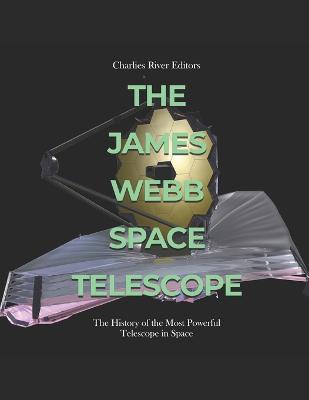The James Webb Space Telescope: The History of the Most Powerful Telescope in Space

The James Webb Space Telescope: The History of the Most Powerful Telescope in Space
On April 24, 1990, the Space Shuttle Discovery lifted off from Kennedy Space Center on the Space Shuttle Program's 35th mission, but this was no ordinary mission. In its payload bay, Discovery was carrying the Hubble Space Telescope, with the objective of putting the telescope into orbit. Despite the costs and initial defects, the Hubble telescope has been a remarkably successful project, furthering astronomers' understanding of the universe more than any other telescope or instrument in history. During its decades in orbit, the versatile telescope has taken high resolution images of objects billions of light years away, giving astronomers a look at the early universe. Along the way it has also taken the most detailed pictures of the solar system, captured the most striking images of star creation and supernovae, and uncovered evidence of phenomena like gamma-ray bursts and dark energy. What made Hubble so crucial is that by escaping Earth's atmosphere, the telescope's views eliminated limitations and interruptions that are a natural part of land-based telescopes. Land-based telescopes are larger, cheaper, and easier to maintain. They are also not vulnerable to the risk of colliding with space junk or fast-moving small meteoric materials. However, even at 11,000 feet, ground-based installations have historically faced atmospheric distortion. The atmosphere blurs the light when a picture is taken through it, and since the 1960s, science has increasingly leaned toward space-based instruments, at first attaching them to balloons and sending them aloft to "carry them above Earth's lower atmosphere." The atmospheric distortion problem with ground telescopes has been largely ameliorated in recent years by the development of "adaptive optics."[1] A ground-based facility can now produce an image as sharp as that of a space telescope. This makes the division of labor between the two a bit clearer. The space instrument provides a wider field of view in addition to fine optical resolution, and it is no longer necessary to use "visual to near-visual"[2] telescopes operating in space. In fact, optical telescope photos are available in high quality for the general public based on NASA technology. Boston Micromachines claims to provide "clearer pictures of celestial objects in deep space than ever before...with 'deformable' mirrors that compensate for atmospheric disturbances and instrument misalignments."[3] Still, scientists need to bu
On April 24, 1990, the Spa
PRP: 86.34 Lei
Acesta este Prețul Recomandat de Producător. Prețul de vânzare al produsului este afișat mai jos.
77.71Lei
77.71Lei
86.34 LeiLivrare in 2-4 saptamani
Descrierea produsului
On April 24, 1990, the Space Shuttle Discovery lifted off from Kennedy Space Center on the Space Shuttle Program's 35th mission, but this was no ordinary mission. In its payload bay, Discovery was carrying the Hubble Space Telescope, with the objective of putting the telescope into orbit. Despite the costs and initial defects, the Hubble telescope has been a remarkably successful project, furthering astronomers' understanding of the universe more than any other telescope or instrument in history. During its decades in orbit, the versatile telescope has taken high resolution images of objects billions of light years away, giving astronomers a look at the early universe. Along the way it has also taken the most detailed pictures of the solar system, captured the most striking images of star creation and supernovae, and uncovered evidence of phenomena like gamma-ray bursts and dark energy. What made Hubble so crucial is that by escaping Earth's atmosphere, the telescope's views eliminated limitations and interruptions that are a natural part of land-based telescopes. Land-based telescopes are larger, cheaper, and easier to maintain. They are also not vulnerable to the risk of colliding with space junk or fast-moving small meteoric materials. However, even at 11,000 feet, ground-based installations have historically faced atmospheric distortion. The atmosphere blurs the light when a picture is taken through it, and since the 1960s, science has increasingly leaned toward space-based instruments, at first attaching them to balloons and sending them aloft to "carry them above Earth's lower atmosphere." The atmospheric distortion problem with ground telescopes has been largely ameliorated in recent years by the development of "adaptive optics."[1] A ground-based facility can now produce an image as sharp as that of a space telescope. This makes the division of labor between the two a bit clearer. The space instrument provides a wider field of view in addition to fine optical resolution, and it is no longer necessary to use "visual to near-visual"[2] telescopes operating in space. In fact, optical telescope photos are available in high quality for the general public based on NASA technology. Boston Micromachines claims to provide "clearer pictures of celestial objects in deep space than ever before...with 'deformable' mirrors that compensate for atmospheric disturbances and instrument misalignments."[3] Still, scientists need to bu
On April 24, 1990, the Spa
Detaliile produsului










